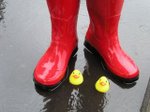 "She hears a sharp crack... Ian is dead. In that instant Judith Muir knows that every thought she has ever had is wrong. All the answers, those grand possibilities, the carefully constructed theories delineating the upward curve of civilization-- all false, all a disguise for what we humans are, what she is."
"She hears a sharp crack... Ian is dead. In that instant Judith Muir knows that every thought she has ever had is wrong. All the answers, those grand possibilities, the carefully constructed theories delineating the upward curve of civilization-- all false, all a disguise for what we humans are, what she is." Here, within the final 100 of pages of Bernice Morgan's Cloud of Bone, is the point upon which this novel turned for me. On page 335 to be exact, when three remarkably disparate stories were fused into something solid, stories braided together. Until then I'd found these separate narratives rather curious in their connection. The first is the story of Kyle Holloway, a young deserter of the Canadian Navy during World War Two, traumatized by his wartime experiences. Followed by the story of Shanawdithit, who had been the last of the Beothuk people of Newfoundland, more than a century before on the same land Holloway now treads. And finally Judith Muir, a forensic anthropologist whose husband Ian is killed as they are investigating a genocide site in Rwanda.
Kyle Holloway's story is brief, curious in its casual brutality. The next part of this book, about the last Beothuk girl, is more detailed, chronicling her people's desecration at the hands of Europeans, "the Dogmen". Shanawdithit's role in this novel is similar to George Cartwright's in The Afterlife of... by John Steffler, though of course this is the other side of the coin. Though well-evoked with Morgan's magnificent prose, this part went on long for me. I was struggling a bit as I began the third part of the novel, Judith's portion, when Ian was dead. Here, I felt on more familiar ground, with writing that reminded me of my favourite British novelists Drabble, Lively, Mantel. Their same preoccupations with history, bones and cities underfoot. "Memory dissolving into the earth". And the whole project suddenly made sense to me, these stories connecting to say something quite profound and disturbing about "what we humans are."
The brutality here is not gratuitous-- Morgan is far too fine a writer. These tales are carefully spun so that reality is not so off-putting, so that the reader is less overwhelmed by violence than what the violence means. Each of these stories functions in their own right, but in their connection is where the possibility of hope lies: "our stories cross over and break away, drift into a future we cannot see, will never know." Morgan has engaged with the world, with history, to produce a work that is massive in its scope. She has built a bridge from the rather self-contained world of CanLit out into the rest of the world, allowing different stories and voices to engage with one another in a brilliant conversation.

